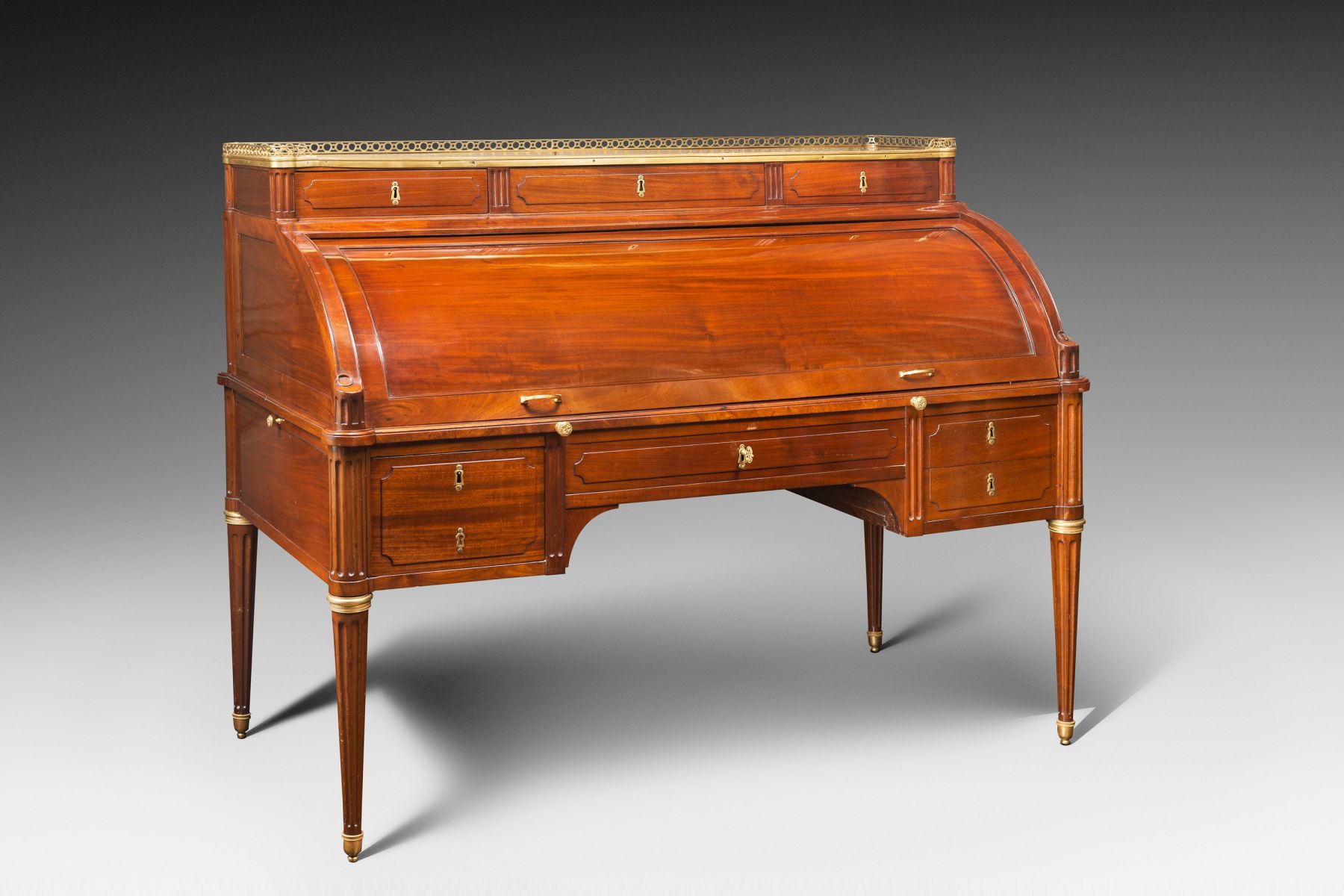Galerie WANECQ
12, rue des Saints-Pères
75007 Paris
FRANCE
Tél. +33 (0)1 42 60 83 64
Monday to Saturday
10h - 13h & 14h - 18h30
- FR
- EN

Furniture
18th century
Joseph Stockel (1743-1802)
1
Furniture du 18th century
A Louis XVI ormolu-mounted bureau à cylindre by J. Stöckel
DIMENSIONS : L. 62.99 .inl. 31.5 .inH. 49.21 .in
MATERIAUX : Mahogany
PROVENANCE : France
PRICE : Contact us
REQUEST INFORMATION
?The veneer mahogany top with three-quarter pierced gallery, above three drawers and roll-top enclosing a fitted interior and a sliding green leather-lined writing-surface, above a frieze drawer flanked by two short drawers to one side and a coffre-fort simulated as two drawers to the other, with writing-slides to each side, on fluted tapering legs, stamped 'J. Stöckel'
Joseph Stockel, maître in 1775
Joseph Stockel (d. 1802) is first recorded in the rue de Charenton in 1769 but only received his maîtrise in 1775. He is most well-known for severely neoclassical furniture veneered in mahogany such as the bureau plat with fasciae-shaped legs probably supplied to the comte de Provence in 1785 and later transferred to the Assemblée nationale. He also supplied four commodes to the comte de Provence through the marchand-mercier Philippe-Ambroise Sauvage in 1786, which were then extensively modified by Benneman to make eight commodes. These commodes then returned to the cabinet du Conseil of Louis XVI at Compiègne and are today at Fontainebleau, Compiègne and the Louvre. Interestingly some of those commodes were adorned with porcelain plaques, making Stockel, along with Godefroy Dester the only ébénistes to use this type of embellishment that were not working for Daguerre and Poirier (such as Carlin, Leleu, RVLC, Saunier and Weisweiler).
Joseph Stöckel (Master on August 2, 1775) is first recorded in the rue de Charenton in 1769 but only received his maîtrise in 1775. He is most well-known for severely neoclassical furniture veneered in mahogany such as the bureau plat with fasciae-shaped legs probably supplied to the comte de Provence in 1785 and later transferred to the Assemblée nationale. He also supplied four commodes to the comte de Provence through the marchand-mercier Philippe-Ambroise Sauvage in 1786, which were then extensively modified by Benneman to make eight commodes. These commodes then returned to the cabinet du Conseil of Louis XVI at Compiègne and are today at Fontainebleau, Compiègne and the Louvre. Interestingly some of those commodes were adorned with porcelain plaques, making Stockel, along with Godefroy Dester the only ébénistes to use this type of embellishment that were not working for Daguerre and Poirier (such as Carlin, Leleu, RVLC, Saunier and Weisweiler).